Classic Clay Modeling, With the Italian Method!
As a lump of clay transforms under skilled hands into a delicate sculpture, so too does the world of classic clay modeling with the Italian method unveil its intricate beauty.
The fusion of history and artistry in Italian sculpting techniques is a testament to the precision and elegance inherent in this craft.
Discover the secrets behind molding clay into timeless masterpieces, and uncover the artistry that has captivated enthusiasts for centuries.
Stay tuned to unravel the mysteries and techniques that make Italian clay modeling a truly captivating journey.
Key Points
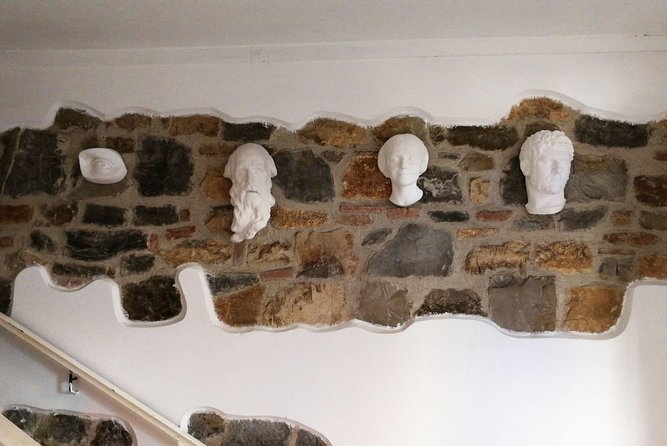
- Italian clay modeling techniques date back to the Renaissance, shaping the art form globally.
- Essential tools like wire loop and ribbon tools are crucial for achieving intricate details.
- Following a step-by-step process from armature construction to detailing enhances sculpting skills.
- Avoid common mistakes like overworking clay and lacking proper tools for professional results.
Here's some more nearby activities we've reviewed
History of Italian Clay Modeling
Italian Clay Modeling boasts a rich historical background that dates back centuries, showcasing a tradition deeply embedded in the cultural fabric of Italy. During the Italian Renaissance, clay modeling flourished as a prominent art form, with artists utilizing intricate sculpture techniques to create stunning masterpieces. This period marked a significant advancement in the art of sculpting, with renowned artists like Donatello and Michelangelo pioneering new methods and pushing the boundaries of what could be achieved with clay.
Sculpture techniques such as additive sculpting, subtractive sculpting, and molding played a vital role in shaping the evolution of Italian clay modeling. The legacy of these techniques continues to influence artists and artisans worldwide, underscoring the enduring impact of Italian clay modeling on the art world.
Essential Tools and Materials
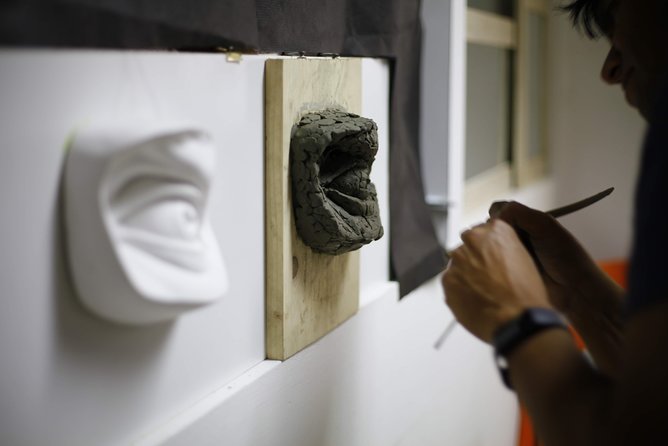
During the Italian Renaissance, artists honed their craft with a diverse array of tools and materials essential for sculpting in clay. When it comes to clay sculpting, having the right modeling tools can make all the difference in creating intricate details and bringing a vision to life. Here are some essential tools and materials commonly used by artists practicing the Italian method:
| Modeling Tools | Materials |
|---|---|
| Wire loop tools | Clay |
| Ribbon tools | Armature wire |
| Wooden modeling tools | Sculpting tools |
| Metal sculpting tools | Clay shapers |
These tools allow artists to manipulate the clay effectively, carve out fine details, and achieve the desired form in their clay sculptures.
Step-by-Step Clay Modeling Process
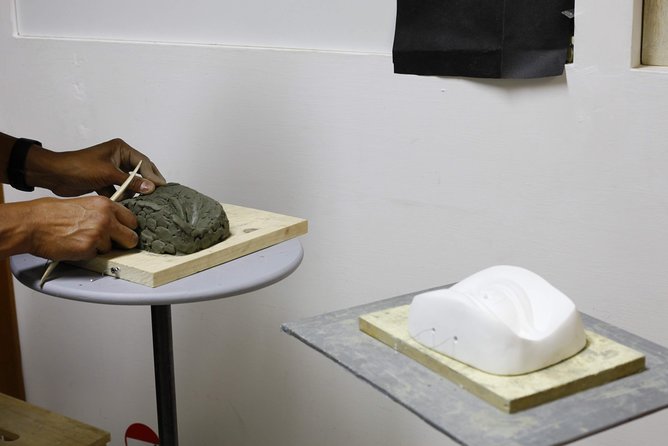
Set out on a journey through the intricate art of clay modeling with a step-by-step process that brings your creations to life. Italian sculpting techniques have a rich history and offer a unique approach to working with clay. Here are some key steps to guide you through the traditional methods:
- Sketch Your Idea: Begin by visualizing your creation and sketching it out to have a clear plan.
- Build the Armature: Construct a supportive framework using wire or foil to give your sculpture structure.
- Add Clay in Layers: Start adding clay gradually, building up the form and refining details as you progress.
- Blend and Smooth: Use tools to blend different clay sections seamlessly and ensure a smooth finish.
Following these steps will help you master the art of clay modeling using Italian sculpting techniques.
Techniques for Detailing and Finishing
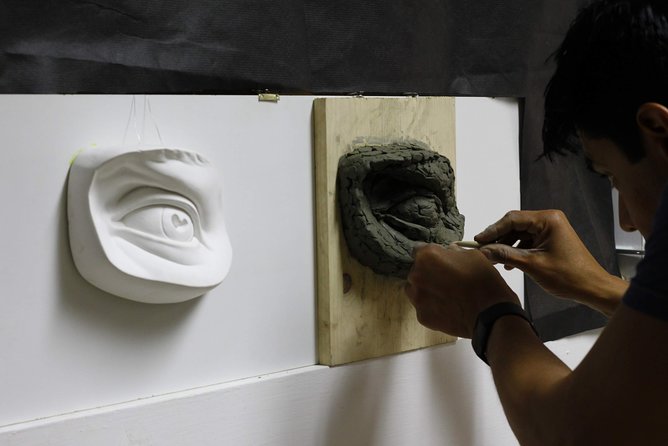
To enhance the intricacy and refinement of your clay sculptures, utilize advanced detailing and finishing techniques that bring a professional touch to your creations.
Advanced sculpting methods such as carving intricate designs, adding textures, and creating realistic features can elevate your sculpture to the next level. Experimenting with different tools like loop tools, wire-end tools, and detailing needles can help achieve fine details with precision.
Creative expression plays a vital role in detailing, allowing you to add personal flair and uniqueness to your work. Consider incorporating various finishing techniques like smoothing surfaces, adding patinas, or painting details to enhance the overall aesthetic. These techniques not only add depth and character to your sculptures but also showcase your skills as a clay artist.
Common Mistakes to Avoid
Enhancing the intricacy and refinement of clay sculptures involves being mindful of common mistakes to avoid, ensuring a professional finish to your creations. Here are some troubleshooting tips and a beginner’s guide to help you navigate the potential pitfalls:
- Overworking the clay: Avoid excessive handling of the clay, as it can lead to a loss of detail and a less refined finish.
- Ignoring proper tools: Using the right tools is crucial for achieving precision and intricate details in your sculptures.
- Skipping the armature: Always use an armature to provide support and structure to your clay model, preventing collapses or deformities.
- Not experimenting with textures: Explore different texturing techniques to add depth and visual interest to your sculptures.
Inspiration From Italian Masters
Drawing upon the rich artistic heritage of Italy, sculptors can find inspiration from the techniques and masterpieces of Italian masters for their clay modeling endeavors. Italian sculptors have long been revered for their mastery of artistic techniques, creating breathtaking works that stand the test of time. By studying the works of renowned artists such as Michelangelo, Bernini, and Donatello, aspiring sculptors can gain valuable insights into form, proportion, and expression. Here is a table showcasing some of the most influential Italian sculptors and their notable works:
| Italian Sculptors | Notable Works |
|---|---|
| Michelangelo | David, Pieta |
| Bernini | Apollo and Daphne, David |
| Donatello | David, Mary Magdalene |
| Canova | Psyche Revived by Cupid, The Three Graces |
| Cellini | Perseus with the Head of Medusa, Salt Cellar |
Showcasing Your Clay Masterpiece
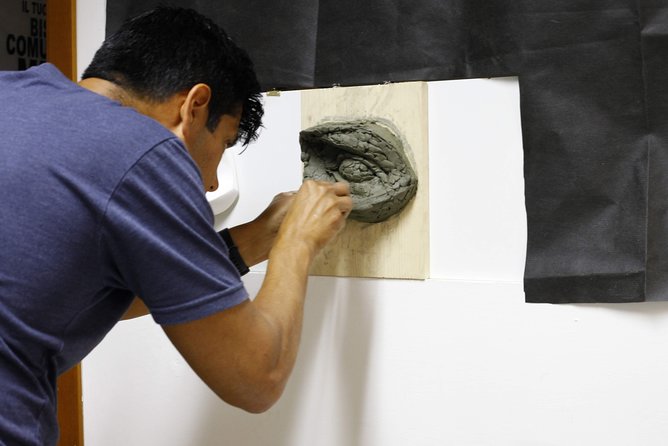
Building upon the inspiration drawn from the techniques and masterpieces of Italian sculptors, showcasing your clay masterpiece involves meticulous attention to detail and a keen eye for artistic expression. When it comes to presenting your clay creation, consider the following engaging tips:
- Display techniques: Experiment with different bases or stands to elevate your sculpture.
- Presentation ideas: Incorporate themed backgrounds or lighting to enhance the overall look.
- Photography tips: Capture your masterpiece from various angles to highlight its unique features.
- Exhibition opportunities: Look for local art shows, galleries, or online platforms to share your work with a wider audience.
These suggestions can help elevate the presentation of your clay artwork and attract the attention it deserves.
Tips for Preserving Clay Artworks
To ensure the longevity and integrity of your clay artworks, proper preservation techniques play a crucial role in maintaining their aesthetic appeal and structural stability. Preserving techniques such as sealing, storing in a cool and dry place, and handling with care can significantly extend the lifespan of your creations. Plus, drawing artistic inspiration from nature, culture, or personal experiences can elevate the significance of your clay artworks. Below is a helpful table summarizing key tips for preserving clay artworks:
| Preserving Techniques | Artistic Inspiration |
|---|---|
| Seal the artwork with a clear varnish | Find inspiration in natural forms |
| Store in a cool, dry place away from direct sunlight | Explore cultural motifs |
| Handle with care to prevent damage | Reflect on personal experiences in your creations |
| Avoid exposing to extreme temperatures | Experiment with different textures and shapes |
| Regularly inspect for any signs of deterioration | Incorporate emotions into your clay pieces |
Here's a few more nearby tours and experiences we have reviewed.
- Uffizi Gallery Small Group Tour With Guide
- Cinque Terre Day Trip From Florence With Optional Hiking
- Florence Accademia Gallery Tour With Entrance Ticket Included
- Pasta Making Class in Florence
- The Dark Side of Florence – Mysteries and Legends
- Chianti Safari: Tuscan Villas With Vineyards, Cheese, Wine & Lunch From Florence
Common questions
Can Children Participate in the Classic Clay Modeling Activity With the Italian Method?
Children can actively participate in classic clay modeling with the Italian method, fostering their creativity and fine motor skills. This engaging activity allows them to explore their artistic talents while having fun in a hands-on learning experience.
Is Previous Experience in Clay Modeling Required to Join the Activity?
No prior experience in clay modeling is required to join the activity. Skill level is beginner-friendly. The learning curve is easy, making it accessible to all. Dive in and enjoy this creative process—it’s a breeze to pick up!
Are There Any Age Restrictions for Participants in the Classic Clay Modeling Experience?
Age restrictions do not apply to participants in the classic clay modeling experience. The activity welcomes all ages and skill levels. Participant requirements are simply a willingness to engage creatively and enjoy the process.
Will There Be a Professional Instructor Guiding the Participants Throughout the Clay Modeling Process?
Yes, a professional instructor will guide participants through the clay modeling process, sharing artistic techniques and expertise. They ensure a hands-on experience, helping individuals of all skill levels unleash their creativity in a supportive environment.
Is There a Specific Theme or Subject That Participants Need to Follow When Creating Their Clay Masterpiece?
Participants have creative freedom during the clay modeling session. They can express their unique interpretations without restrictions. There’s no specific theme to follow, allowing for diverse and personalized creations. Artistic expression is encouraged to flourish.
Here's more of our most recent tour reviews happening neaby
- Private 3-Hour Food Tour of Florence
- Bargello Museum – Private Tour
- Skip-the-Line Tickets: Accademia, Uffizi
- Boboli Garden Skip The Line Ticket
- Exclusive Lunch Tour and Wine Tasting at a Chianti Classic Winery
- Enchanting Uffizi Gallery Semi Private Tour
- EXCLUSIVE Wine Tour in Chianti & San Gimignano (Lunch & Wine Tasting Included)
- Pisa & Tuscany in One Day – Small Group
- Uffizi Gallery Small Group Tour With Private Option
- Wine Tasting Activity at Chianti Rufina
- Kids Friendly Tour of Florence Highlights Including the David & Gelato Tasting
Last Words
As the clay takes shape under skilled hands, it symbolizes the endless possibilities of creativity and craftsmanship.
The Italian method of clay modeling not only preserves tradition but also inspires new artistic horizons.
Embrace the beauty and precision of sculpting with clay, and let your imagination soar.
With dedication and passion, you too can create stunning masterpieces that reflect the timeless artistry of Italian sculptors.
Unleash your creativity and sculpt your own legacy with clay!





